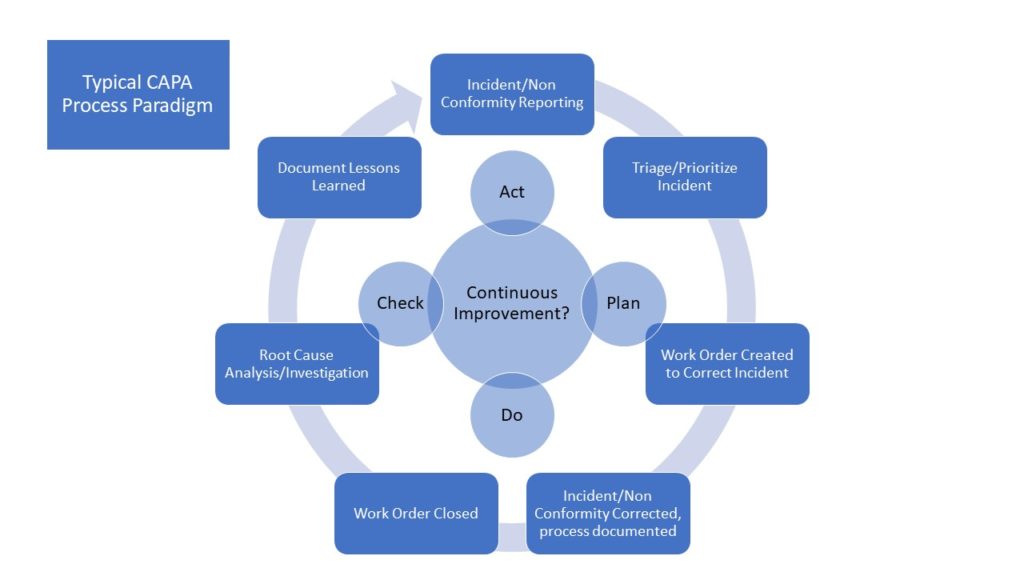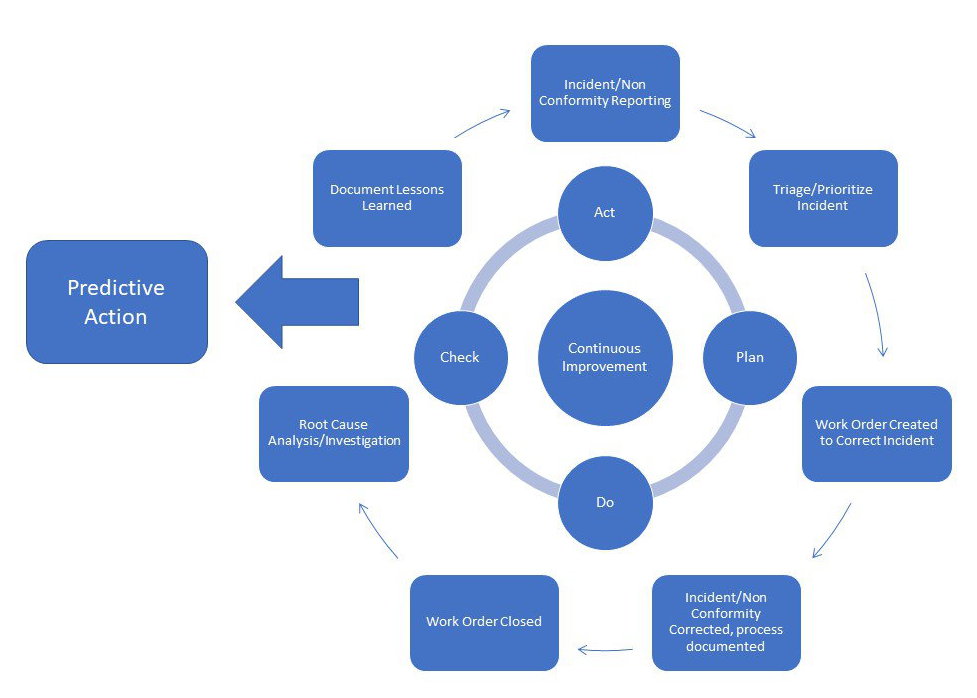Corrective & Preventative Action (CAPA)
CAPA provides you with a way to track issues from capturing the initial complaint through resolution. It also allows you to tailor how different types of issues will be handled. With customized workflow and templates you can decide what pieces of information you’d like to collect and who in your organization should take ownership in resolving the problem. After the details are captured in the workflow, based upon the source of the issue, they will automatically be dropped into a pre-designed template allowing you to apply specific actions with specific people assigned and a workflow. Issues will immediately flow to the compliance manager, customer complaints will immediately flow to the quality manager and so on.
Issues and complaints can be captured via easy to design custom workflows, capturing only the details that you want to capture.
However there are many challenges in the Corrective and Preventative Action process within most companies.
Challenges & Pain Points
-
Although most regulated companies have some CAPA automation, very few automate all process steps
-
Tracking of Corrective Action (CA) is usually manual
-
Any documentation created during the corrective action is difficult to track & retrieve later
-
Status of ongoing CAPA processes are difficult to obtain
-
Inability to retrieve Corrective Action (CA) documentation reduces ability to create a Preventative Action (PA)
-
A Corrective Action (CA) may introduce investigations or fines from regulatory bodies
-
Corrective Action (CA) is a reactive process thus more expensive to complete
-
Root Cause Analysis (RCA) is time consuming and expensive
-
Status of RCA is difficult to obtain
-
Lessons Learned from RCA are not easy to find and reuse
-
Preventative Action (PA) process is manual
-
Any documentation is difficult to track and retrieve
-
Difficulty in retrieving available CA documentation or Lessons Learned reduces ability to create Preventative Action (PA)
-
A Preventative Action (PA) is a proactive and less expensive process
-
Preventative Actions (PA) do not require RCA
Typical CAPA Process

All regulated industries should have a documented process for CAPA, a typical process follows:
-
Incident or Non-Conformity is reported
-
Incident is triaged (given a priority)
-
Based on incident type and priority; Work Order is created to correct problem
-
Corrective action is taken, all action taken is documented
-
Based on severity of incident, Root Case Analysis (RCA) may be required
-
Based on RCA, a Preventative Procedure may be created
-
Any Lessons Learned are documented and made available
Sextant Digital CAPA Process Solution

-
Work Order is used to drive Corrective Action (CA) workflow
-
Process can be Mobile enabled
-
All supporting documentation (reports, photos, video, etc.) for CA can be attached to Work Order
-
Once Work Order is complete and approved all supporting documentation is easily retrievable
-
Corrective Action (CA) Process is fully auditable
-
Escalation is available
-
Corrective Action (CA) Process Dashboard provides status
-
If Root Cause Analysis (RCA) is required, workflow can drive process
-
Process can be Mobile enabled
-
All supporting documentation (reports, photos, video, etc.) for RCA can be attached
-
All RCA documentation can be associated with work order
-
Documentation can also be associated with Lessons Learned
-
Preventative Action (PA) Procedure creation can be Workflow driven
-
Preventative Action (PA) Work Order process can leverage CA process
-
Escalation is available
-
Preventative Action (PA) Process Dashboard provides status
Sextant Digital CAPA Process Value
-
Both CA and PA Processes leverage workflow control
-
Mobile enablement provides maximum flexibility and control
-
Escalation and Dashboards enhance transparency
-
Early recognition of pending issues
-
Drives events(triggers)
-
Drives urgency and timely completion of CA or PA to avoid regulatory audits or fines
-
Supporting documentation for both CA and PA processes are easily retrievable
-
This same documentation is available to Lessons Learned
-
Sextant Digital CAPA Process facilitates the ability for an organization to perform more less expensive Preventative Action (PA) processes than the more expensive Corrective Action (CA)
-
Regulatory Fines
-
Regulatory Investigation
-
RCI is expensive ($120k+ each)
-
Enhancement of the Preventative Action (PA) through use of structured process that allows for minimize Corrective Action (CA) and increase the Preventative Actions (PA). Enhanced by controlling the work that was done, easily searchable.
-
Drive the process of creating the Preventative Action (PA)
-
Cause a review and through a Workflow cause (supporting materials) to a Preventative Action (PA) being created
Sextant Digital Value
Automating the manual aspects of the CAPA process:
-
Correction action process – repair non-conformity, document and supporting documentation of that repair (e.g. images, reports)
-
Corrective action – RCI – capture all reports, recommendations, and supporting documentation, gathered and associated with the RCI
-
RCI – capture the recommendations and procedure (auditable, regulated document) made to create the published Preventative Action.
-
Lessons Learned – use a workflow to create the documents and reports with the actual Lessons Learned content and Published. System stores and retains – who did Lessons Learned, where are the Lessons Learned, available to support the Preventative Action Procedure. Readily available in system with easily retrievable search parameters.


